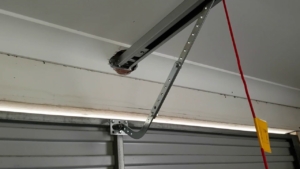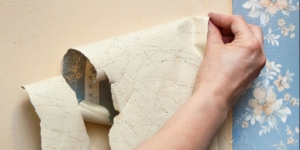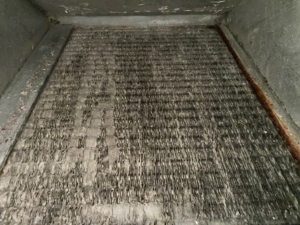Mold on the Outside of an Air Handler:
Causes, Risks, and Prevention
Discovering mold on the outside of an air handler can be a serious issue. This unsightly problem often indicates an underlying issue that requires immediate attention. Before panicking, take a moment to understand what this mold means, where it comes from, and how to deal with it effectively.
This post will guide you through the process of identifying mold, understanding its causes, and exploring effective solutions. We’ll discuss practical steps on how to deal with mold on the outside of an air handler, helping you maintain a safe and healthy environment at home. So, let’s get started.
What is an Air Handler?
Definition and Purpose
An air handler is an essential component of a heating, ventilation, and air conditioning (HVAC) system. It plays a role in maintaining indoor comfort by circulating and filtering the air in a building. The primary purpose of an air handler is to distribute conditioned air throughout the space it serves.
Think of an air handler as the heart of your HVAC system. It takes in air from the atmosphere or a specific area, conditions it, and then circulates it back into the building. This process helps maintain a comfortable temperature, humidity level, and air quality indoors.
Components of an Air Handler
An air handler consists of several key components, each performing a specific function to ensure efficient air circulation and conditioning. Let’s take a closer look at these components:
1. Blower
The blower is responsible for moving the air through the air handler and into the ductwork. It creates the necessary air circulation to distribute the conditioned air evenly throughout the building.
2. Heat Exchanger or Cooling Coils
Depending on the season and the HVAC system’s mode of operation, the air handler may have either a heat exchanger or cooling coils. The heat exchanger helps warm the air in the winter, while the cooling coils cool it in the summer. These components are crucial for maintaining the desired temperature indoors.
3. Filters
Air filters are vital for maintaining good indoor air quality. They trap dust, pollen, pet dander, and other airborne particles, preventing them from recirculating into the building. Regular filter replacement or cleaning is necessary to ensure efficient air filtration and to prevent the buildup of contaminants.
4. Dampers
Dampers control the flow of air within the air handler. They regulate the amount of air that enters different sections of the system, allowing for precise temperature control in different areas of the building.
5. Humidifier/Dehumidifier
In some cases, an air handler may also include a humidifier or dehumidifier. These components help maintain optimal humidity levels indoors, preventing excessive dryness or excessive moisture. Proper humidity control is crucial for both comfort and health.
6. Control Panel
The control panel is the brains of the air handler. It houses the controls and sensors that monitor and regulate the system’s operation. The control panel ensures that the air handler functions according to the desired settings and responds to changes in temperature or air quality.
In conclusion, an air handler is a vital part of an HVAC system, responsible for circulating and conditioning the air in a building. By understanding its components and how they work together, you can appreciate the significant role an air handler plays in maintaining indoor comfort and air quality.
Causes of Mold on the Outside of an Air Handler
Mold growth on the outside of an air handler can be a cause for concern. Not only does it affect the efficiency of the unit, but it can also pose health risks to those living or working in the building. In this section, we will explore the various causes of mold on the outside of an air handler, shedding light on why it occurs and how it can be prevented.
Moisture Buildup
One of the primary reasons for mold growth on the outside of an air handler is moisture buildup. The air handler operates by circulating air throughout the HVAC system, and during this process, condensation can form on its exterior surface. If this moisture is not properly drained or removed, it creates an ideal environment for mold to thrive.
To mitigate moisture buildup, regular maintenance is vital. This includes inspecting and cleaning the condensate drain line, ensuring it is free from obstructions. Check the insulation around the air handler, and repairing any damaged areas can help prevent moisture from accumulating on its surface.
Lack of Proper Ventilation
Another factor that contributes to the growth of mold on the outside of an air handler is the lack of proper ventilation. When an air handler is not adequately ventilated, stagnant air can become trapped around the unit, creating a breeding ground for mold spores.
To address this issue, it is important to ensure that the air handler is installed in a well-ventilated area. This allows for proper airflow and prevents the buildup of stagnant air. Regular cleaning and maintenance of the air filters can help improve ventilation and reduce the risk of mold growth.
Presence of Organic Material
The presence of organic material near the air handler can also contribute to the development of mold. Dust, dirt, and debris that accumulate on the unit’s exterior can provide nutrients for mold spores, allowing them to flourish.
To minimize the presence of organic material, regular cleaning of the air handler is essential. This includes removing any debris that may have accumulated on the unit’s surface. In addition, keeping the surrounding area clean and free from dust and dirt can help prevent mold growth.
Health Risks Associated with Mold on the Outside of an Air Handler
Mold is a common problem that can occur in various areas of our homes, including the outside of an air handler. While many people may associate mold with indoor spaces, it is important to recognize that mold growth on the outside of an air handler can pose significant health risks. In this section, we will explore the potential health issues that can arise from exposure to mold in this particular context.
Allergic Reactions
One of the primary health risks associated with mold on the outside of an air handler is allergic reactions. Mold spores can become airborne and easily enter our respiratory system, triggering allergic responses in susceptible individuals. Symptoms of mold allergies can vary from person to person, but commonly include sneezing, coughing, itching, watery eyes, and skin rashes. These allergic reactions can be particularly troublesome for those with pre-existing respiratory conditions or compromised immune systems.
Respiratory Issues
Exposure to mold on the outside of an air handler can also lead to respiratory problems. The inhalation of mold spores can irritate the respiratory tract, causing symptoms such as coughing, wheezing, shortness of breath, and chest tightness. In some cases, prolonged exposure to mold can even contribute to the development or exacerbation of respiratory conditions such as asthma. Individuals with respiratory issues should be especially cautious and seek professional help to address the presence of mold on their air handler.
Potential for Mold Spreading
Another concern when it comes to mold on the outside of an air handler is the potential for mold to spread to other areas of the home. Mold spores are tiny and lightweight, easily carried through the air to different parts of the house. This can lead to the contamination of additional surfaces, amplifying the risk of mold-related health problems. Taking immediate action to address mold growth on the outside of the air handler is crucial to prevent further spreading and protect the overall indoor air quality.
Prevention and Maintenance
Regular Cleaning and Inspection
Regular cleaning and inspection of your air handler is crucial in preventing mold growth. Over time, dust, dirt, and other debris can accumulate on the surface of the unit, providing a fertile breeding ground for mold spores. By incorporating a routine cleaning schedule into your maintenance routine, you can ensure that your air handler remains free from mold and other contaminants.
Start by turning off the power to the air handler and removing the access panel. Use a soft cloth or brush to gently clean the exterior surfaces, paying close attention to any visible signs of mold or mildew. It’s important to wear protective gloves and a mask to avoid inhaling any potentially harmful substances during the cleaning process.
In addition to regular cleaning, it’s also essential to conduct periodic inspections of your air handler. Look for any signs of water leakage, condensation, or moisture buildup around the unit. These can indicate underlying issues that could promote mold growth. If you notice any problems, it’s best to consult with a professional HVAC technician to address them promptly.
Addressing Moisture Issues
Moisture is a common catalyst for mold growth, and addressing any moisture issues is crucial in preventing mold from developing on the outside of your air handler. Start by checking the area around the air handler for any signs of water leaks or condensation. Inspect the drainage system and ensure that it is functioning properly.
If you discover any leaks or excess moisture, it’s important to fix them as soon as possible. Repair any damaged pipes, seals, or fittings, and consider installing a dehumidifier in areas with high humidity levels. Proper insulation and ventilation can also help to reduce moisture buildup and prevent mold growth.
Improving Ventilation
Another effective strategy for mold prevention is improving ventilation in the area where your air handler is located. Proper airflow helps to regulate temperature and humidity levels, reducing the likelihood of mold growth.
Ensure that there is adequate ventilation around the air handler by keeping the area clear of obstructions. Avoid storing items directly against the unit, as this can impede airflow and create an environment conducive to mold growth. If necessary, consider installing additional vents or fans to enhance airflow and promote better ventilation.
Professional Mold Remediation
When it comes to dealing with mold, it’s important to know when to seek professional help and how to find a qualified mold remediation company. Mold can be a serious issue that requires specialized knowledge and expertise to handle effectively. In this section, we will discuss the importance of professional mold remediation and provide you with tips on finding the right company for the job.
When to Seek Professional Help
Mold may seem like a minor concern at first, but it can quickly become a significant problem if not addressed properly. While minor mold growth can sometimes be tackled on your own, there are certain situations where it is best to seek professional help. Here are a few instances where professional mold remediation should be considered:
- Extensive Mold Growth: If you notice a large area affected by mold or if the mold has spread to multiple rooms, it is recommended to call in professionals. They have the tools and expertise to handle large-scale mold remediation effectively.
- Toxic Mold: Certain types of mold, such as black mold (Stachybotrys chartarum), can release toxic spores that can cause health issues. If you suspect toxic mold in your home, it is crucial to hire professionals who can safely remove and mitigate the problem.
- Underlying Water Damage: Mold is often a result of excessive moisture or water damage. If you have a leaky roof, plumbing issues, or flooding, it is vital to address the underlying cause and ensure proper remediation to prevent future mold growth.
- Health Concerns: If you or your family members experience persistent allergy-like symptoms, respiratory issues, or other health problems that seem to worsen when you are at home, it could be due to mold. In such cases, seeking professional help is recommended to identify and eliminate the source of the problem.
Finding a Qualified Mold Remediation Company
Finding the right mold remediation company is crucial to ensure the job is done effectively and safely. Here are some steps you can take to find a qualified professional:
- Research and Recommendations: Start by doing thorough research online and seeking recommendations from friends, family, or neighbors who have previously dealt with mold issues. Look for companies with positive reviews and a good reputation.
- Certifications and Licenses: Check if the mold remediation company you are considering has the necessary certifications and licenses. Reputable companies will have certifications from organizations such as the Institute of Inspection, Cleaning and Restoration Certification (IICRC) or the National Organization of Remediators and Mold Inspectors (NORMI).
- Experience and Expertise: Look for companies with years of experience in the field. Mold remediation requires specific knowledge and techniques, so it’s important to choose a company that specializes in this area.
- Insurance Coverage: Ensure that the company you hire has liability insurance. This will protect you in case of any accidental damage that may occur during the remediation process.
- Free Consultations and Estimates: Many reputable mold remediation companies offer free consultations and estimates. Take advantage of these to get a better understanding of the scope of the work and the cost involved.
Remember, professional mold remediation not only ensures the effective removal of mold but also addresses the underlying causes to prevent future growth. By hiring a qualified company, you can have peace of mind knowing that your home is in safe hands.
Conclusion
In conclusion, dealing with mold on the outside of an air handler is a common issue that can have significant consequences if left unchecked. Mold not only poses health risks but can also affect the efficiency and lifespan of your HVAC system. To prevent mold growth, it is crucial to address the underlying causes such as excessive moisture and poor ventilation. Regular cleaning and maintenance of the air handler, along with implementing preventive measures, can help keep mold at bay. Additionally, seeking professional assistance when dealing with severe mold infestations is highly recommended. By taking these proactive steps, you can ensure a healthy and efficient HVAC system while maintaining a safe indoor environment.







